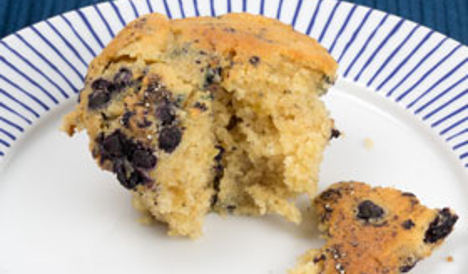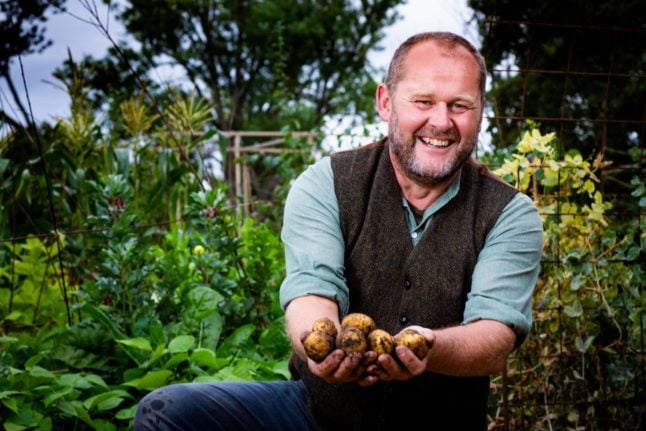Summary
Makes: 9 muffins
Time needed: 45 minutes (15 minutes preparation, 30 minutes cooking time)
Ingredients
75g frozen bilberries (wild blueberries) or frozen blueberries
240g plain (all-purpose) flour
12-15 green cardamom pods (or use 1 teaspoon of ready ground cardamom)
110g butter, cubed and softened
200g demerara sugar
1 egg, lightly beaten
1 tsp baking powder
1 tsp bicardbonate of soda (baking soda)
1/2 tsp salt
240ml buttermilk
1 lime, zest and juice

Photo: Swedish Food
Method
1. Preheat the oven to 190°C (375°F, gas 5, fan 160°C) and line a muffin tray with 9 muffin cases.
2. Toss the frozen bilberries in a little flour and put them back in the freezer.
3. Lightly crush to cardamom pods to remove the seeds and then grind the seeds as much as possible using a pestle and mortar. You should end up with about 1 teaspoon of ground cardamom.
4. Beat the butter in a food mixer until it is very soft, about the consistency of mayonnaise.
5. Beat in the sugar, then the beaten egg and mix until well combined.
6. Sift the flour, baking powder, bicarbonate of soda, ground cardamom and the salt in a separate bowl and mix well.
7. Fold half of the flour mixture into the mix and then half the buttermilk, then remaining flour and buttermilk. Finally, fold in the lime juice and zest, but do not overwork. Leave the mixture overnight if possible.
8. Spoon the mixture into the muffin cases, dot with bilberries and sprinkle the remaining cardamom over the top.
9. Bake in the oven for about 30 minutes until golden brown and an inserted skewer comes out clean. Cool on a wire rack and eat when still warm.
Tips
– Use frozen berries as it helps to prevent the colour from bleeding too much into the mixture.
– Tossing the berries in a little flour helps to prevent them from sinking.
– Use blueberries if you prefer or if you can’t find frozen bilberries (wild blueberries). Blueberries are a bit sweeter whilst bilberries have a stronger flavour.

Photo: Swedish Food
– If you can, leave the mixture to rest for up to 36 hours, as this enables the flour to hydrate and produce fluffier muffins. It doesn't make a really big difference, but it is worth doing if it is convenient and particularly if you want muffins for breakfast.
– Although most recipes use 2 tsp of baking powder, 1 tsp of baking powder and 1 tsp of bicarbonate of soda (baking soda) produces slightly fluffier muffins because of the presence of buttermilk and lime juice.
– Using buttermilk gives the muffins a slightly sour taste which is better for a muffin, but not so good for a cupake!
– Allow the muffins to cool slightly before serving, but muffins don’t keep very well, so don’t wait too long! (They can be reheated in a microwave: 30 seconds each on a medium setting.)
Recipe courtesy of John Duxbury, Editor and Founder of Swedish Food




 Please whitelist us to continue reading.
Please whitelist us to continue reading.
Member comments